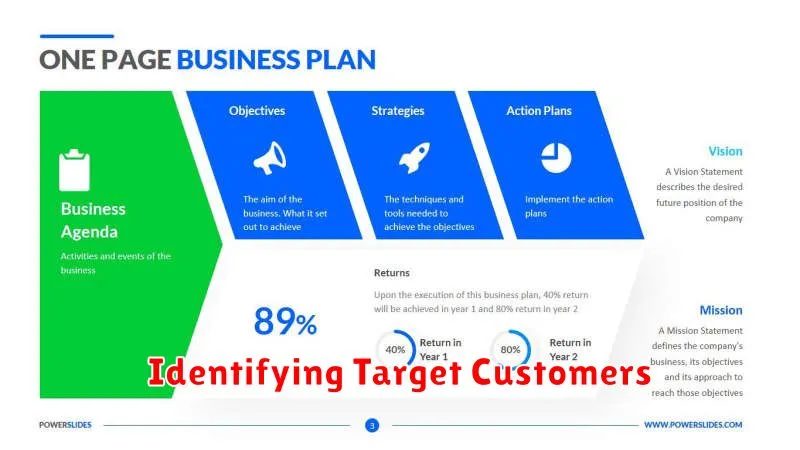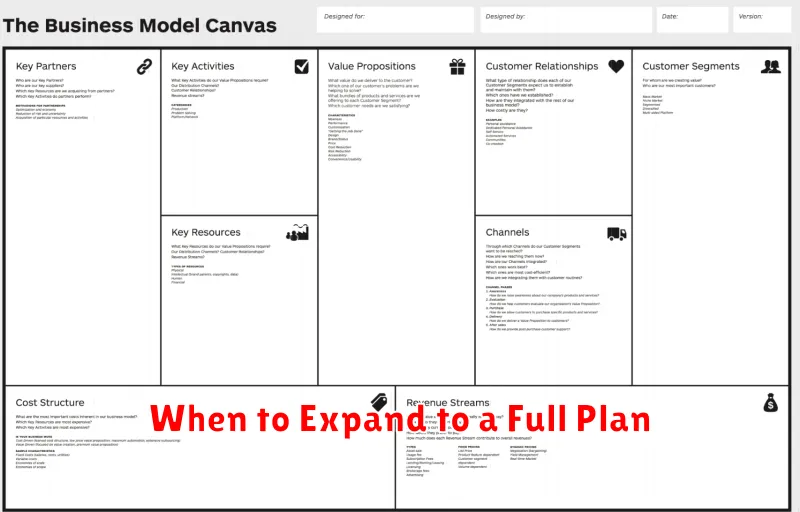A one-page business plan is a powerful tool for entrepreneurs and business owners. It provides a concise yet comprehensive overview of your business, covering key aspects such as your business model, target market, competitive advantage, and financial projections. Whether you are starting a new venture, seeking funding, or simply want to clarify your business strategy, learning how to write a one-page business plan can be invaluable. This streamlined approach avoids the complexities of lengthy documents and allows for efficient communication and quick decision-making.
This guide will provide a step-by-step approach to creating a compelling one-page business plan. We will explore the essential components, offer practical tips, and provide examples to help you craft a document that effectively communicates your vision, strategy, and potential for success. By understanding the core elements of a business plan and focusing on concise, impactful language, you can create a one-page business plan that serves as a roadmap for your business’s growth and a powerful tool for attracting investors and stakeholders. Learn how to write a one-page business plan that is both informative and persuasive.
Why a One-Page Plan Is Useful
A one-page business plan offers several key advantages. Its concise nature promotes clarity and focus, forcing you to distill your ideas into their most essential components. This brevity makes it easier to communicate your vision effectively to potential investors, partners, and team members.
Furthermore, a one-page plan is a dynamic tool. Its compact form allows for quick revisions and adaptations as your business evolves and market conditions change. This agility is crucial in today’s fast-paced business environment.
Finally, a one-page plan encourages regular review. Its accessible format makes it easy to revisit and reassess your strategies, ensuring you stay on track and maintain accountability.
Elements of a One-Page Business Plan
A concise one-page business plan effectively summarizes your business’s core components. It should include the key elements that investors and stakeholders look for, presented in a clear and easily digestible format.
Start with a Problem statement and your proposed Solution. Briefly describe your Target Market and the Value Proposition that sets you apart. Outline your Business Model, including revenue streams. Highlight your Competitive Advantages and any Key Milestones achieved or anticipated.
Finally, summarize your Management Team and their expertise, and provide a brief Financial Overview, including funding requirements and projected returns. This succinct overview provides a snapshot of your business and its potential.
Crafting a Clear Mission Statement
A mission statement concisely defines your company’s purpose and overall goal. It explains why your business exists and what it aims to achieve. This statement serves as a guiding principle for all business decisions and helps communicate your company’s identity to both internal stakeholders and the public.
Focus on clarity and brevity. A strong mission statement should be easily understood and memorable. Consider key questions like: What unique value do you offer? What are your core principles? Who is your target audience?
For example, a bakery might have a mission statement like: “To bake delicious, high-quality breads and pastries using traditional methods, bringing joy to our community.” This clearly states the product, quality commitment, and target audience.
Outlining Products or Services
This section of your one-page business plan should clearly define what you’re offering. Focus on the core value proposition. What problem are you solving for your customers? Briefly describe your products or services, highlighting their key features and benefits.
If you have multiple offerings, consider using a table or bulleted list for clarity. Prioritize your most profitable or strategically important products or services. Don’t get bogged down in minute details; keep it concise and impactful.
Identifying Target Customers

A crucial step in developing a one-page business plan is identifying your target customers. Understanding your ideal customer allows you to tailor your products, services, and marketing efforts effectively.
Consider key demographics such as age, location, income level, and occupation. Also, analyze psychographics, including values, interests, and lifestyle choices. This information helps you create a detailed customer profile, enabling you to focus your resources on reaching the most receptive audience.
Clearly defining your target market is essential for a successful business plan and helps to ensure efficient resource allocation and maximized return on investment.
Mapping Revenue Streams
A one-page business plan requires a clear articulation of how your business will generate revenue. This section, Mapping Revenue Streams, should concisely identify all anticipated sources of income.
Start by listing your core products or services. For each item, specify the pricing strategy. Will you utilize value-based pricing, competitive pricing, or cost-plus pricing? Briefly justify your approach.
Consider any secondary revenue streams, such as affiliate marketing or licensing agreements. While less prominent, these can contribute to your overall financial performance. Be sure to include these sources for a comprehensive view of your revenue model.
Estimating Costs and Key Metrics
A crucial part of your one-page business plan involves estimating startup costs and outlining key performance indicators (KPIs). Accurately projecting costs, both initial and ongoing, is essential for securing funding and managing your finances effectively.
Categorize your costs into fixed costs (rent, salaries) and variable costs (materials, marketing). Develop a realistic sales forecast to estimate revenue. This data informs your profitability projections and demonstrates the financial viability of your business.
Identify the key metrics that will measure your business’s success. These will vary depending on your industry and business model, but might include customer acquisition cost, conversion rates, or customer lifetime value. Tracking these metrics allows you to monitor progress, identify areas for improvement, and demonstrate growth to investors.
Setting Short-Term Goals
A one-page business plan needs clearly defined short-term goals. These goals provide measurable steps towards achieving your overall business vision. Focus on goals achievable within the next 12 months. This timeframe allows for consistent progress and adaptability to changing market conditions.
Short-term goals should be Specific, Measurable, Achievable, Relevant, and Time-bound (SMART). For example, instead of “increase sales,” a SMART goal would be “increase sales by 15% in the next quarter by implementing a new marketing campaign.” This provides a clear target and timeframe for evaluation.
Choosing a Visual Format
A one-page business plan benefits from a clear and concise visual format. This enhances readability and allows stakeholders to quickly grasp key information. Consider using a structured layout with distinct sections.
Several formats can achieve this. A lean canvas provides a structured overview of key business elements. Alternatively, a traditional business plan summary, condensed onto one page, works well. Using bullet points and short paragraphs helps maintain brevity and clarity.
Select a format that best showcases your business and target audience. A visually appealing and organized plan will make a stronger impact.
When to Expand to a Full Plan

While a one-page business plan is a powerful tool for initial planning and quick overviews, certain situations call for a more comprehensive document. Consider expanding to a full business plan when seeking significant investment, applying for loans, or onboarding key executives.
A full plan provides the in-depth analysis and detailed projections these stakeholders require. It offers a more robust demonstration of your business’s potential and mitigates perceived risks. This detailed approach builds credibility and demonstrates a strong commitment to long-term success.
Additionally, complex businesses with multiple revenue streams or intricate operations may benefit from the structured approach of a full plan. It allows for a deeper exploration of various aspects of the business and facilitates more strategic decision-making.

